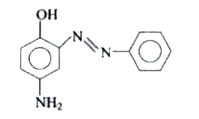Consider LiH,MgH2 and CuH:
all are ionic hydrides
LiH,MgH2 are ionic, whereas CUH is covalent
all are covalent
LiH is ionic, MgH2 is covalent CuH is metqallic
The correct Answer is:D
To determine the nature of the hydrides LiH (lithium hydride), MgH₂ (magnesium hydride), and CuH (copper hydride), we can analyze each compound based on the properties of the elements involved.
1. Identify the Type of Elements:
- Lithium (Li) is an alkali metal.
- Magnesium (Mg) is an alkaline earth metal.
- Copper (Cu) is a transition metal.
2. Analyze Lithium Hydride (LiH):
- Lithium donates one electron to hydrogen.
- The bond formed between lithium and hydrogen is primarily ionic due to the significant difference in electronegativity between lithium and hydrogen.
- Conclusion: LiH is an ionic hydride.
3. Analyze Magnesium Hydride (MgH₂):
- Magnesium has two valence electrons and can share these electrons with hydrogen atoms.
- The bond formed is more covalent in nature because magnesium shares its electrons with hydrogen rather than completely transferring them.
- Conclusion: MgH₂ is a covalent hydride.
4. Analyze Copper Hydride (CuH):
- Copper can exhibit metallic bonding characteristics.
- In CuH, the bonding involves sharing of electrons, which is typical of metallic hydrides.
- Conclusion: CuH is a metallic hydride.
5. Summarize the Findings:
- LiH: Ionic hydride
- MgH₂: Covalent hydride
- CuH: Metallic hydride
6. Evaluate the Options:
- Option 1: All are ionic hydrides (Incorrect)
- Option 2: LiH and MgH₂ are ionic, CuH is covalent (Incorrect)
- Option 3: All are covalent (Incorrect)
- Option 4: LiH is ionic, MgH₂ is covalent, CuH is metallic (Correct)
Final Answer:
The correct classification is:
- Lithium hydride (LiH) is ionic,
- Magnesium hydride (MgH₂) is covalent,
- Copper hydride (CuH) is metallic.
- Lithium (Li) is an alkali metal.
- Magnesium (Mg) is an alkaline earth metal.
- Copper (Cu) is a transition metal.
- Lithium donates one electron to hydrogen.
- The bond formed between lithium and hydrogen is primarily ionic due to the significant difference in electronegativity between lithium and hydrogen.
- Conclusion: LiH is an ionic hydride.
- Magnesium has two valence electrons and can share these electrons with hydrogen atoms.
- The bond formed is more covalent in nature because magnesium shares its electrons with hydrogen rather than completely transferring them.
- Conclusion: MgH₂ is a covalent hydride.
- Copper can exhibit metallic bonding characteristics.
- In CuH, the bonding involves sharing of electrons, which is typical of metallic hydrides.
- Conclusion: CuH is a metallic hydride.
- LiH: Ionic hydride
- MgH₂: Covalent hydride
- CuH: Metallic hydride
- Option 1: All are ionic hydrides (Incorrect)
- Option 2: LiH and MgH₂ are ionic, CuH is covalent (Incorrect)
- Option 3: All are covalent (Incorrect)
- Option 4: LiH is ionic, MgH₂ is covalent, CuH is metallic (Correct)
The correct classification is:
- Lithium hydride (LiH) is ionic,
- Magnesium hydride (MgH₂) is covalent,
- Copper hydride (CuH) is metallic.
Topper's Solved these Questions
- HYDROGEN, WATER AND HYDROGEN PEROXIDEBOOK - CENGAGE CHEMISTRY ENGLISHCHAPTER - HYDROGEN, WATER AND HYDROGEN PEROXIDEEXERCISE - Exercises (Assertion Reasoning)
17 Videos
- HYDROGEN, WATER AND HYDROGEN PEROXIDEBOOK - CENGAGE CHEMISTRY ENGLISHCHAPTER - HYDROGEN, WATER AND HYDROGEN PEROXIDEEXERCISE - Exercises (Interger)
10 Videos
- HYDROGEN, WATER AND HYDROGEN PEROXIDEBOOK - CENGAGE CHEMISTRY ENGLISHCHAPTER - HYDROGEN, WATER AND HYDROGEN PEROXIDEEXERCISE - Exercises Multiple Correct
19 Videos
- GENERAL ORGANIC CHEMISTRYBOOK - CENGAGE CHEMISTRY ENGLISHCHAPTER - GENERAL ORGANIC CHEMISTRYEXERCISE - Analytical and Descriptive
1 Videos
- IONIC EQUILIBRIUMBOOK - CENGAGE CHEMISTRY ENGLISHCHAPTER - IONIC EQUILIBRIUMEXERCISE - Archives Subjective
28 Videos
Similar Questions
Knowledge Check
Consider the reaction
 A
A B
B C
C Dnone of these
Dnone of these
In the reaction LiH+AlH3→LiAlH4,AlH3andLiH act as :
View SolutionIn the reaction LiH+AlH3→LiAlH4,AlH3andLiH acts as :
View SolutionArrange the following
a.CaH2,BeH2and TiH2 in order of increasing electrical conductance.
b. LiH,NaH and CsH in order of increasing ionic character.
c. H−H,D−D and F−F in order of increasing bond dissociaton enthalpy.
d. NaH,MgH2 and H2O in order of increasing reducing property.
View SolutionConsider
<imga≤ocr_imageload∈g=lazysrc=https://d10lpgp6xz60nq.cloudfront.net/physics_images/BMS_V03_C04_E01_141_Q01.pngwh=80%mx-autosty≤=background:white;>.<br>Thechar≥appear∈gisC_(2) is.
View SolutionConsider the reaction
RCHO+NH2NH2→R−CH=NNH2
What sort of reaction is it?
View SolutionConsider the reaction
RCHO+NH2NH2→R−CH=NNH2
What sort of reaction is it?
View SolutionConsider a cell given below.
Cu∣∣Cu2+∣∣∣∣Cl−∣∣Cl2.Pt
Write the reactions that occur at anode and cathode.
View Solution

